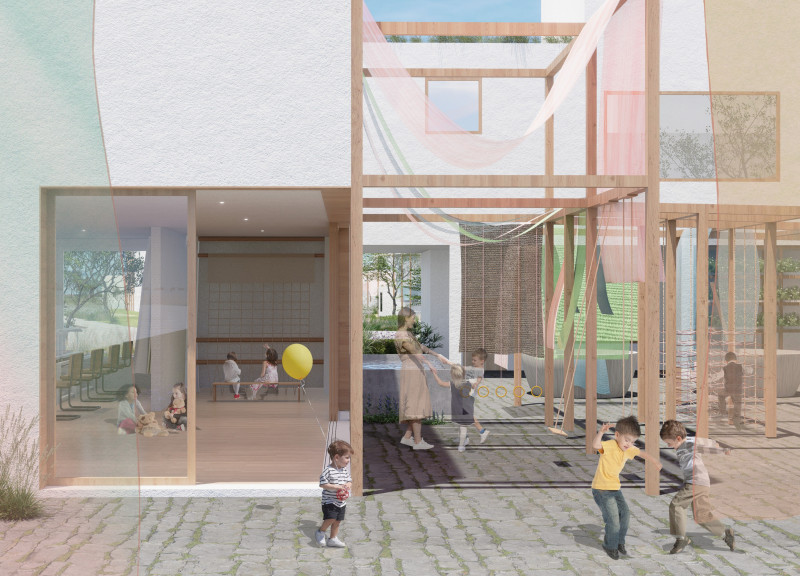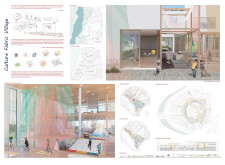5 key facts about this project
## Culture Fabric Village Project Overview
Located in a strategically selected area, Culture Fabric Village is designed to promote community engagement through cultural and educational activities targeted primarily at children. Integrated into the architectural framework is the theme of traditional fabric production, aiming to create a vibrant environment that fosters social interaction and creative learning. This project addresses essential functional needs while also cultivating a rich cultural context conducive to community cohesion.
### Spatial Strategy and User Interaction
The spatial organization is thoughtfully arranged to encourage active participation and collaboration. Informal gathering spaces, supported by flexible configurations, facilitate spontaneous interactions among users, promoting community ties across various age groups. The design includes specific zones for play, learning, and socialization, with childcare centers acting as hubs for community activities, thereby fostering parental involvement.
Within the childcare center, the interior reflects an inviting atmosphere characterized by vibrant play areas designed with interactive installations and climbing features to stimulate physical activity and imaginative play. The outdoor areas feature adaptable installations suited for workshops and gatherings, enhancing the project’s responsiveness to community needs.
### Material Selection and Sustainability
The choice of materials is integral to the project’s design philosophy. Wood is used as a primary structural element, contributing to warmth and sustainability while ensuring a robust framework for interactive spaces. Colorful textiles are incorporated into both the aesthetic and functional components of the building, aligning with the theme of fabric production and enriching the visual experience.
Large glass windows allow for transparency and connection to the surrounding environment, maximizing natural light and visibility into the active spaces. Additionally, stone paving in outdoor areas provides a durable foundation that harmonizes with the architectural and natural landscape, further emphasizing the project’s commitment to sustainable design principles.



















































